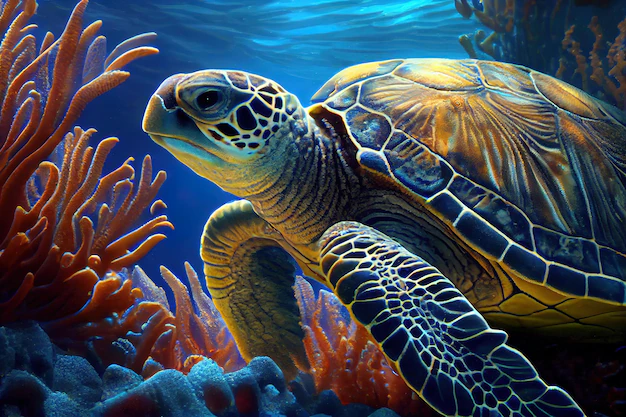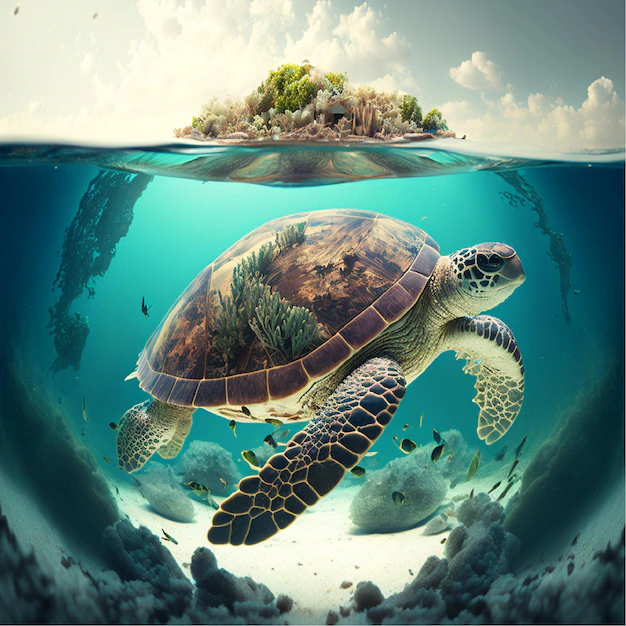Navigating the Depths: The Environmental Psychology of Marine Turtle Life Cycles

Page Contents
Introduction
In the vast expanse of the world’s oceans, a captivating dance unfolds—the life cycle of marine turtles. Beyond its biological significance, the journey of these remarkable creatures resonates deeply with the principles of Environmental Psychology. From the instinctual nesting on sandy shores to the awe-inspiring oceanic migrations, the interconnection between marine turtle life cycles and Environmental Psychology offers a profound lens through which we can understand our relationship with the natural world.

Significance of Environmental Psychology with Marine Life
Environmental psychology holds paramount significance in understanding the intricate relationship between individuals and their surrounding environments. As a field that investigates the interplay of human behavior, cognition, and emotions with the physical and social environments, it provides essential insights into the ways in which our surroundings influence mental well-being, decision-making, and overall quality of life. By unraveling the complexities of this relationship, environmental psychology contributes to the development of sustainable and user-friendly environments, informs effective urban planning, and guides conservation efforts. Moreover, it underscores the profound impact that nature and the built environment have on human health, emphasizing the importance of fostering spaces that nurture psychological well-being and foster a harmonious coexistence between individuals and their surroundings.
Sea turtles clean the water by moving and moving around and stirring the dirt and their shells providing habitat for some smaller marine species. Turtles help preserve the environment by keeping their natural habitats and enhance the flow of the “Ocean-to-Beach Nutrients: as they lay their healthy eggs.
Navigating the Depths: The Environmental Psychology of Marine Turtle Life Cycles
Section 1: The Nesting Ritual


– A Symphony of Senses The first chapter in the life of a marine turtle unfolds on the sandy beaches where mothers return, often to the very site of their own birth. The choice of nesting grounds, influenced by environmental cues and memories, showcases the intrinsic connection between the turtle’s behavior and its surroundings. Environmental Psychology emphasizes the profound impact of surroundings on behavior, and in the case of marine turtles, the nesting ritual becomes a sensory symphony—an intimate dance between the creature and its environment.
Section 2: The Hatchling Odyssey

– Navigating Environmental Challenges, the emergence of hatchlings marks the commencement of an extraordinary journey. As these tiny turtles’ venture towards the ocean, they face a myriad of environmental challenges, from predatory threats to artificial lights that can disorient them. Understanding the psychological aspects of adaptation and resilience becomes crucial in unraveling the intricate dance between the turtles and their ever-changing environment. The survival instincts displayed by hatchlings underscore the depth of their connection with the surrounding ecosystem.
Section 3: Oceanic Nomads


– The Migratory Essence The open sea becomes a canvas for the next act in the life cycle of marine turtles. Their extensive migrations across oceans reflect an innate understanding of environmental cues and the psychological navigation of vast, fluid expanses. Environmental psychology illuminates the crucial link between these majestic travelers and the oceanic environment, emphasizing the intricate interplay between the creatures and the dynamic forces that shape their existence.
Section 4: Threats and Conservation


– A Call to Environmental Action While the life cycle of marine turtles is a testament to nature’s resilience, it is not without its challenges. Anthropogenic threats, from plastic pollution to climate change, pose severe risks to their survival. Recognizing the psychological toll of these threats on both the turtles and the ecosystems they inhabit becomes a rallying call for environmental psychology. Conservation efforts that address the psychological impact of human activities on marine turtles are essential in safeguarding their existence.

Stewards of the Environment
As stewards of the environment, recognizing the interconnectedness between marine turtle life cycles and our own psychological well-being becomes a powerful catalyst for fostering diverse environment conservation, ensuring that these mesmerizing creatures continue to grace our oceans for generations to come– a legacy of a Golden Gift that we can pass on to the next gen.
Conclusion
The intricate dance of marine turtle life cycles offers a poignant narrative, intertwining the realms of Biology and Environmental Psychology. By delving into the complexities of their nesting rituals, hatchling odysseys, and oceanic migrations, we gain a profound understanding of our shared journey with these ancient navigators. In a world grappling with environmental challenges, the significance of environmental psychology lies in its ability to bridge the gap between human behavior and the spaces we inhabit, ultimately shaping a more sustainable and psychologically enriching future.







